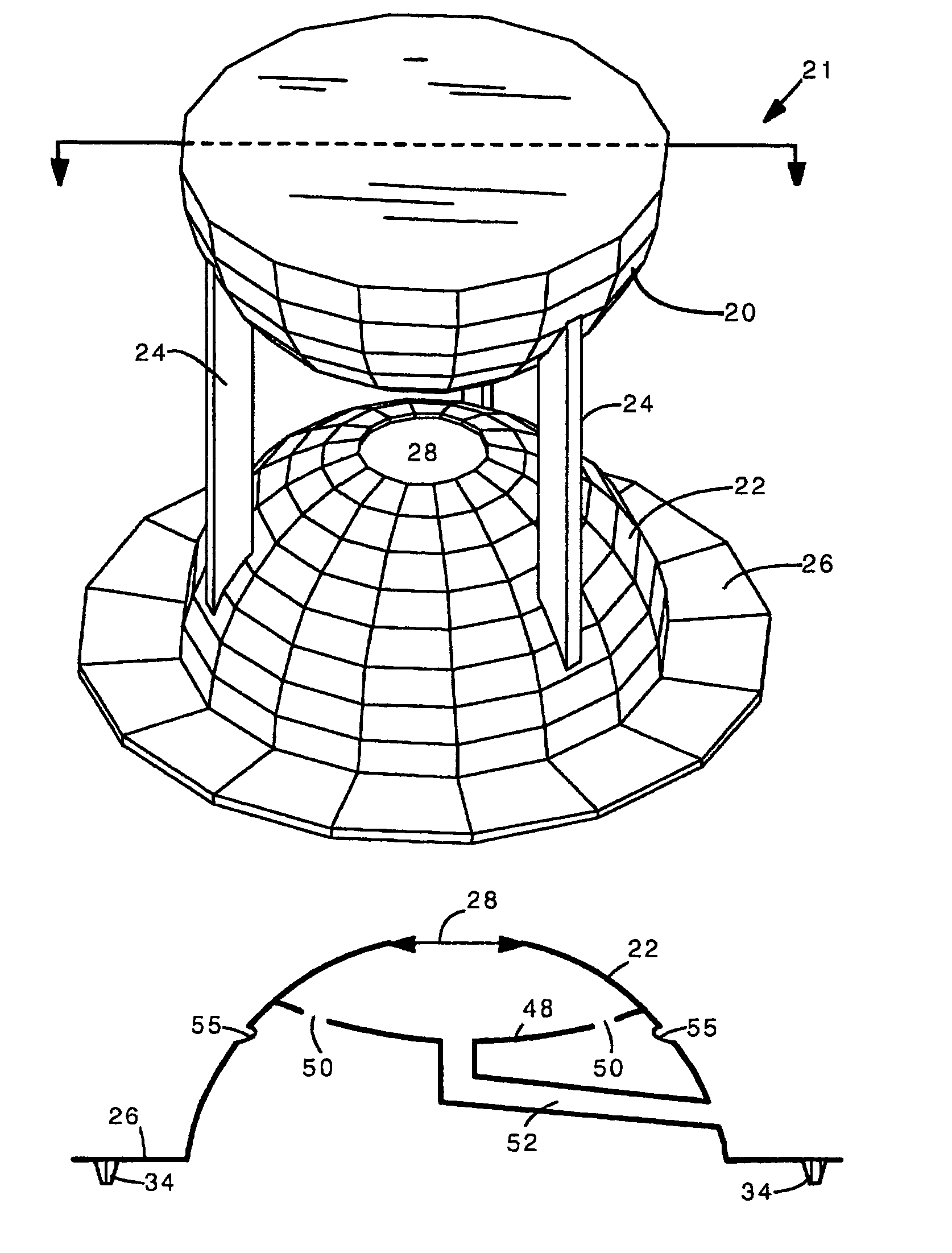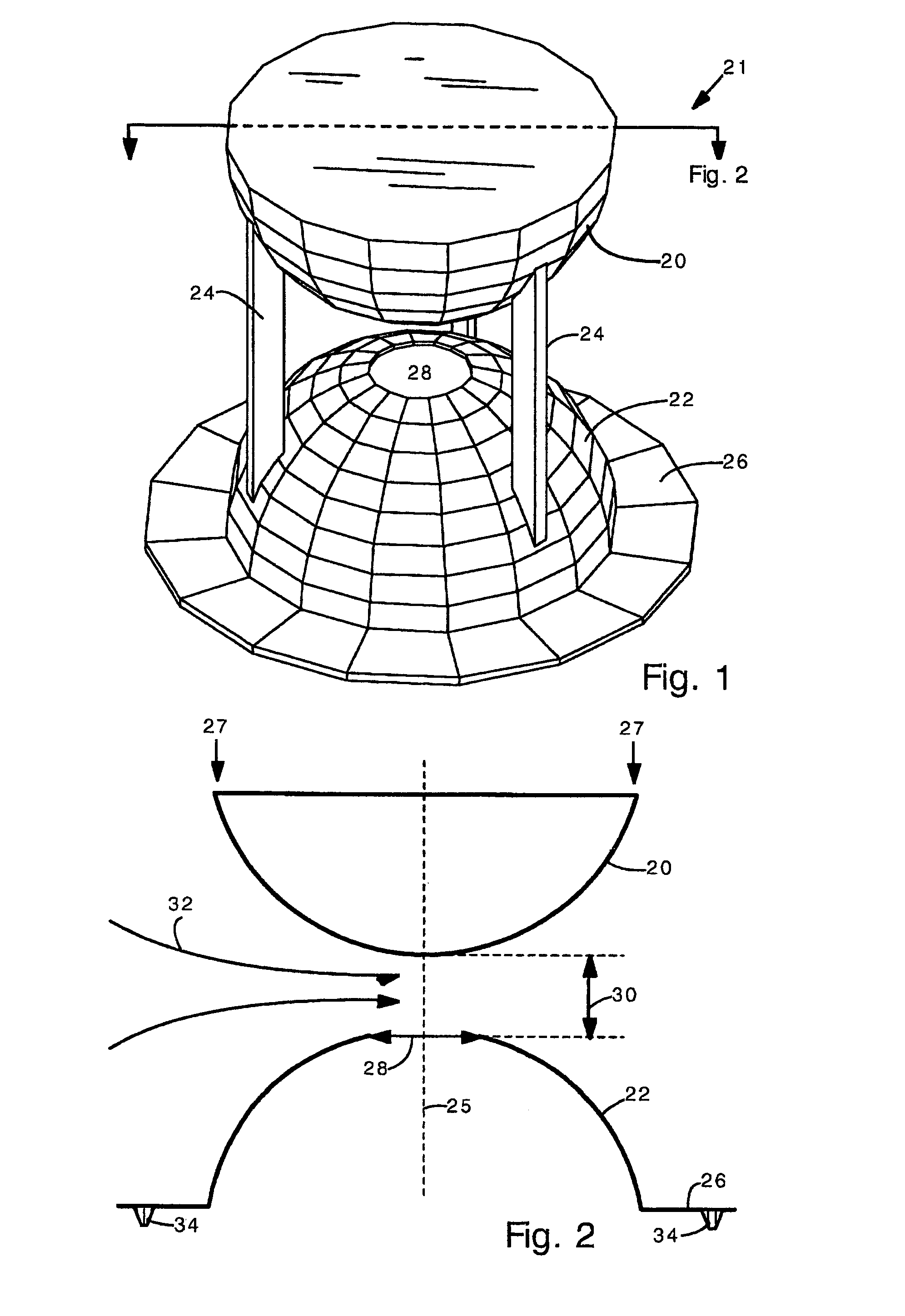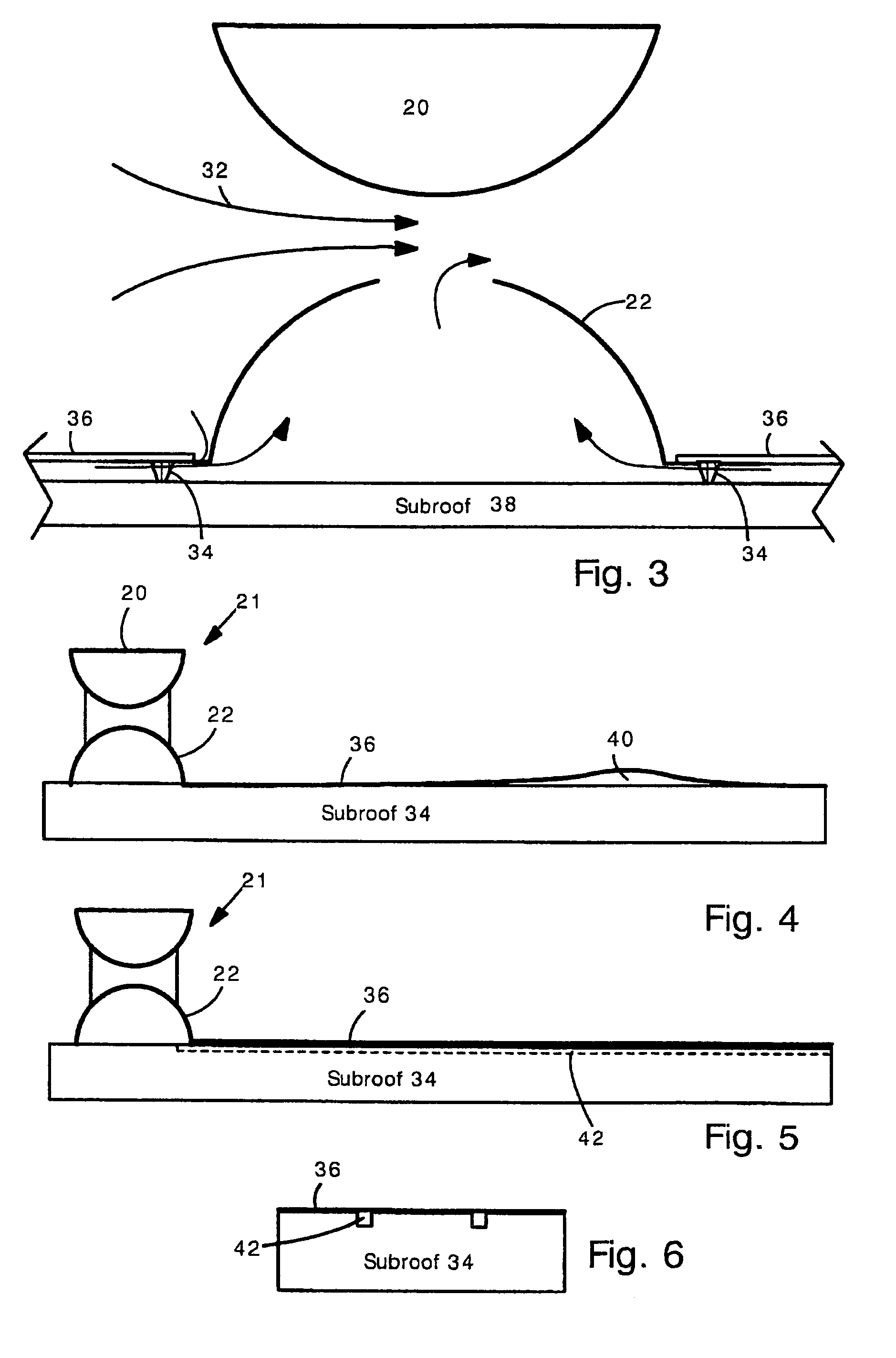Rooftop vent for reducing pressure under a membrane roof
a technology of membrane roof and vent, which is applied in the field of rooftop vents, can solve the problems of membrane roof lifted from the subroof, being torn from the building, being damaged in other ways, and being susceptible to damage, so as to achieve the effect of maximizing the area of reduced pressur
- Summary
- Abstract
- Description
- Claims
- Application Information
AI Technical Summary
Benefits of technology
Problems solved by technology
Method used
Image
Examples
Embodiment Construction
[0023]The present invention provides a roof vent and roof system that reduces air pressure under a membrane roof when wind blows, thereby holding down the membrane roof. The present roof vent employs the Venturi effect to reduce the pressure under the membrane. The reduced pressure tends to prevent uplift during high wind events. Specifically, the present roof vent has two hollow domes separated by a gap. When wind blows, airflow is forced through the gap between the domes where it creates a zone of low pressure due to the Venturi effect. The bottom dome has a port located at the gap. The port is open to the space under the membrane roof. Therefore, when air flows between the two domes, the low pressure at the port tends to draw air from under the membrane and air pressure under the membrane is reduced to less than the atmospheric pressure.
[0024]FIG. 1 shows a perspective view of the present roof vent 21. The roof vent 21 has an upper dome 20, a lower dome 22 and legs 24. Legs 24 su...
PUM
 Login to View More
Login to View More Abstract
Description
Claims
Application Information
 Login to View More
Login to View More - R&D
- Intellectual Property
- Life Sciences
- Materials
- Tech Scout
- Unparalleled Data Quality
- Higher Quality Content
- 60% Fewer Hallucinations
Browse by: Latest US Patents, China's latest patents, Technical Efficacy Thesaurus, Application Domain, Technology Topic, Popular Technical Reports.
© 2025 PatSnap. All rights reserved.Legal|Privacy policy|Modern Slavery Act Transparency Statement|Sitemap|About US| Contact US: help@patsnap.com



